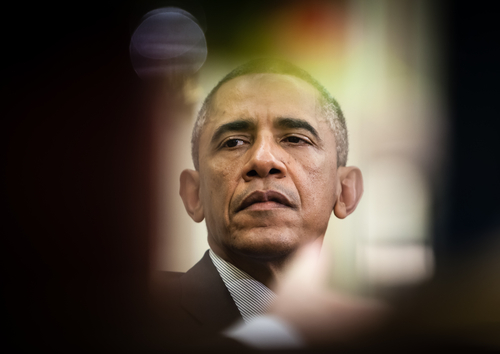
In a revelation that has sent shockwaves through the political landscape, The New York Times, often criticized by conservatives for its liberal bias, inadvertently confirmed what many on the right have long suspected: former President Barack Obama is not just a shadowy figure in the current administration but is actively directing its course. This bombshell information, brought to light by Steve Bannon and further analyzed by The Gateway Pundit, underscores the extent of Obama's influence over President Joe Biden's White House, raising serious questions about who is truly at the helm of American governance.
Steve Bannon, a prominent conservative commentator, has pointed to a recent article by Katie Rogers in The New York Times as evidence of Obama's deep involvement in efforts to undermine former President Donald Trump. According to Bannon, this piece not only highlights Obama's disdain for Trump but also reveals his direct communication with White House staffers, effectively issuing orders and shaping policy from behind the scenes. This narrative, long espoused by conservative outlets like The Gateway Pundit, now finds unexpected validation from within the ranks of what many consider the mainstream media.
Treasonous Barack Obama and the Soros Family are responsible for the LAWFARE being waged against President Trump.
This is the ‘Deep State’. pic.twitter.com/cb0kHiWLFV
— Liz Churchill (@liz_churchill10) March 25, 2024
The implications of Obama's active participation in the Biden administration are profound. It suggests a level of continuity between his presidency and the current one, with Obama's political agenda continuing to influence the direction of the country. This behind-the-scenes orchestration by a former president is unprecedented in modern American history and raises concerns about the transparency and independence of the Biden administration.
Critics argue that this arrangement could undermine the democratic process, with decisions being made not by the elected president but by a predecessor without any current official role or accountability. The revelation that Obama has been directly calling White House staffers, as reported by The New York Times, paints a picture of an administration under the guidance of someone other than the person voters elected into office.
HOLY SHIT…
“Who is to benefit? This crime can only be a link, in a chain of attempts, by those who are at war with our country since 2014”.
Putin is referring the Obama State Dept/CIA who overthrew Ukraine (Nuland).
Putin is blaming the Deep State…pic.twitter.com/0gdTUashCX
— Clandestine (@WarClandestine) March 25, 2024
Furthermore, Obama's alleged efforts to counter Trump's influence and ensure the continuation of his own policies through Biden's presidency suggest a strategic maneuvering that goes beyond mere advice or mentorship. It points to a concerted effort to maintain control over the Democratic Party's direction and the broader political landscape, potentially sidelining Biden in the process.
This news also casts a new light on the dynamics within the Democratic Party. Obama's apparent lack of confidence in Biden, as evidenced by his direct intervention, may indicate deeper divisions and concerns about the party's future and leadership capabilities. It raises questions about the extent to which Biden is able to assert his own vision and authority within his administration and party.
As conservatives digest this information, it reinforces long-held suspicions about the power dynamics at play in Washington, D.C. The New York Times' report, albeit perhaps unintentionally, has provided fodder for those who argue that the current administration is merely a continuation of Obama's, with the former president still pulling the strings. This revelation not only challenges the narrative of Biden's autonomy but also calls into question the very nature of leadership and decision-making within the highest echelons of American politics.
In conclusion, the confirmation by The New York Times of Obama's active role in the Biden administration is a turning point in our understanding of the current political landscape. It validates conservative concerns about the continuity of Obama's influence and sets the stage for a broader debate about governance, transparency, and the true locus of power in the Biden White House. As this story unfolds, it will undoubtedly continue to spark discussion and analysis from all sides of the political spectrum.













